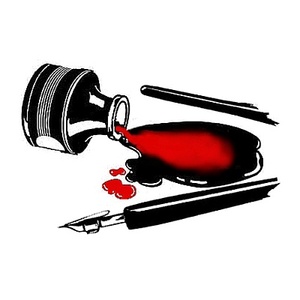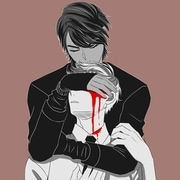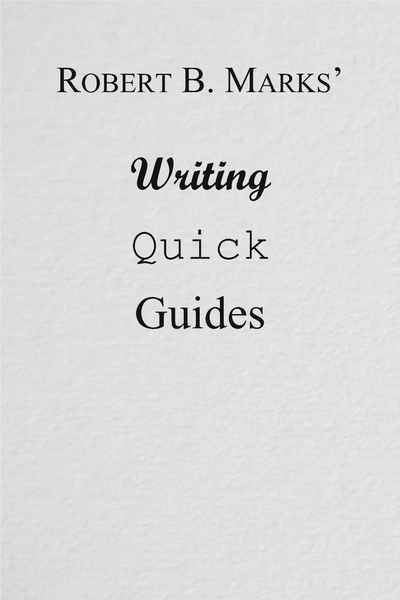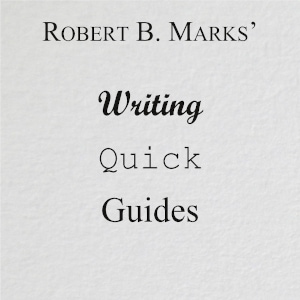If this particular guide had a subtitle, I think it would be "How not to commit public relations seppuku." Unfortunately, this is something I am seeing again and again with some pretty large companies who used to know much better. It's so bad, in fact, that if it were any other decade, heads would be rolling for the many mistakes being made on properties like Star Wars, The Rings of Power, etc.
EDIT: It has been brought to my attention that the poisoning of the well with diversity marketing that I discuss here is not actually present on Tapas itself. This is a very good thing, and I was very happy to learn it. So, please keep in mind that when I talk about the pitfalls of diversity marketing here, I am referring to marketing to the general public.
So, what I want to do is talk about how one should actually present one's work to the public. And it begins by identifying the key selling point of your novel - the "hook" that will draw the reader into your story.
The Key Selling Point
There is something special about your novel, something that sets your work apart, or, even if it doesn't, is at least well enough executed to make the reader want to start reading and continue reading. The most important part of presenting it to the public is figuring out what this selling point is. This is the point you will emphasize over all others when you talk about your book on forums, write the blurb, etc.
Here, genre is a tremendous help - it points you to where you should be looking. So, if your work is a romance, then the key selling point will be the love story or something associated with it; if it is a fantasy, your key selling point will be something relating to the adventure; if it is a science fiction novel, you will be looking at either the adventure or the concept being explored, and so on.
Now that you know where to look, you have to pin down the key selling point. In the case of a romance, you can't just say that it's a love story, because that IS the definition of a romance. However, if it is a romance of forbidden love at a time of war or revolution, now you've got something to interest the reader. In a science fiction story, your key selling point isn't going to the presence of spaceships (it's science fiction - spaceships come with the territory), but a desperate escape from the gravitational pull of a black hole before time dilation kills everybody back home who the protagonist loves is a great hook for the reader.
Diversity is not a key selling point. I will discuss the problems with marketing based on it below, but for the time being just know that if the first thing that comes to mind is the diversity of your characters, you need to think harder.
Secondary Selling Points
With the key selling point you have hooked your reader, but you still have to draw them in. This is where the secondary selling points come in - these are what you present along with, but with less emphasis than, the key selling point. Now we are moving beyond the conceptual into things like the characters and the worldbuilding.
For characters, consider what makes them, well, them. What do they want? What challenges will they face? Is your protagonist a hard boiled detective who lost their faith long ago? Are they a former mobster looking for a new life? Are they running away from their secrets? Are they looking for love and enjoying life to its fullest?
(And here we have to talk about one of the problems of marketing based on diversity. It's very tempting to try to score points by talking about the diversity of your characters - the colour of their skin, their sexuality, etc.. But this is the most shallow aspect of your characters that exists, and it tells the potential reader next to nothing about them. "Black" is not a character - a black kid from the inner city trying to rescue his brother from a street gang IS. "Transgender" is not a character - a transgender woman struggling with their identity in the wake of a divorce IS. This doesn't mean that you shouldn't tell the potential reader that a character is black, gay, trans, etc. - it means that you have to tell them the rest as well. You need to sell them on the whole character, not just their most shallow attribute.)
For worldbuilding, consider what makes your story world special. Is it a world of realpolitik, or perhaps a world of magical wonder? Is it a world where nobody is as they seem, or a modern look at the classic fantasy tropes. A good way to identify this is to just think about a hypothetical conversation where you are telling somebody about your story's world. What is the first thing that you'd want to tell them? Most of the time, this will be your key worldbuilding selling point.
Putting it Together
You now have your primary and secondary selling points identified. What comes next is figuring out how to put it together (most often in the form of a blurb, telling people about it in a forum, etc.).
A blurb is often a bit counter-intuitive in that you will usually want to put your primary selling points AFTER your secondary selling points. You are using your characters and worldbuilding as a lead-in to telling the reader why they should REALLY be checking out your book (so, for example, the key selling point of Re:Apotheosis is a war between fictional characters in the real world - this is the second paragraph of the blurb). This is not universal, of course, but it does frequently gain best results.
When you are talking about your book on a forum or on social media, you will generally be leading with your key selling point, or a variation on it, and then following it with your secondary selling points. Think of it this way: if you were in a conversation and you were telling somebody about your book, you would start by saying "I wrote a book about [KEY SELLING POINT]," and then go on to talk about the details.
Avoiding Seppuku
Remember to tell the potential reader what your book is about. A great example of how not to do this is the marketing for a Netflix series called First Kill. This was a show about vampires and detailed vampire politics, during which the two protagonists, a vampire and a vampire hunter, fall in love. Netflix decided that the most important thing to tell everybody about was that the two protagonists were female and that it was a lesbian love story. They focused on this to such an extent that they basically forgot to tell anybody that vampires were involved. As a result, the show failed to gain an audience.
Avoid being toxic with your readers. Never, EVER attack your readers or potential readers. Regardless of the separation between author and work, readers will judge your book based on your actions. If they look you up and see that you're mainly known on social media for calling people who don't like your work racists, they'll write you (and your book) off regardless of whether you were right or wrong. Now, it should be said that everybody makes mistakes (hell, I've made a mistake of this nature on these very forums with somebody who got under my skin) - if you do make a mistake of this nature, take responsibility for it and move on.
Never lead with emphasizing diversity. The problem with diversity marketing here is three-fold: First, it doesn't set your book apart - almost everybody has diverse casts of characters these days...so you need to focus on what everybody else DOESN'T have. Second, the toxicity of those who committed PR seppuku while calling fans of long-standing properties racist has poisoned the well - for most readers, diversity marketing is now associated with that toxicity, and leading with statements about the diversity of your characters associates you and your work with that toxicity. And, third, diversity in and of itself appeals to a woke/activist audience, but this is very small in comparison to the audience who likes, for example, adventure stories - so, by focusing on diversity first, you're appealing to a small group of potential readers while associating yourself and your book with toxicity to everybody else...it's a no-win scenario.
(Note: it should be stated that point #2 does NOT apply to somebody taking offense on social media. The problem with social media in the here and now is that many of the forms and methods of emotional and psychological abuse have been normalized on it. More often than not, apologizing to somebody who has taken offense to something in your story on social media does little more than allow them to get their hooks into you and start acting abusive towards you. You are far better off ignoring them and not engaging at all. You may take my word for it - I am a mental abuse survivor, and I've been on the receiving end of many of these things from those who abused me.)
To sum up: identify your key and secondary selling points, and concentrate on them. Do this, and you will increase your odds of finding the audience your book needs.












Comments (1)
See all